Abstract
Beneficial effects of nitroprusside infusion in heart failure are purportedly a result of decreased afterload through “impedance” reduction. To study the effect of nitroprusside on vascular factors that determine the total load opposing left ventricular ejection, the total aortic input impedance spectrum was examined in 12 patients with heart failure (cardiac index <2.0 liters/min per m2 and left ventricular end diastolic pressure >20 mm Hg). This input impedance spectrum expresses both mean flow (resistance) and pulsatile flow (compliance and wave reflections) components of vascular load. Aortic root blood flow velocity and pressure were recorded continuously with a catheter-tip electromagnetic velocity probe in addition to left ventricular pressure. Small doses of nitroprusside (9-19 μg/min) altered the total aortic input impedance spectrum as significant (P < 0.05) reductions in both mean and pulsatile components were observed within 60-90 s. With these acute changes in vascular load, left ventricular end diastolic pressure declined (44%) and stroke volume increased (20%, both P < 0.05). Larger nitroprusside doses (20-38 μg/min) caused additional alteration in the aortic input impedance spectrum with further reduction in left ventricular end diastolic pressure and increase in stroke volume but no additional changes in the impedance spectrum or stroke volume occurred with 39-77 μg/min. Improved ventricular function persisted when aortic pressure was restored to control values with simultaneous phenylephrine infusion in three patients. These data indicate that nitroprusside acutely alters both the mean and pulsatile components of vascular load to effect improvement in ventricular function in patients with heart failure. The evidence presented suggests that it may be possible to reduce vascular load and improve ventricular function independent of aortic pressure reduction.
Full text
PDF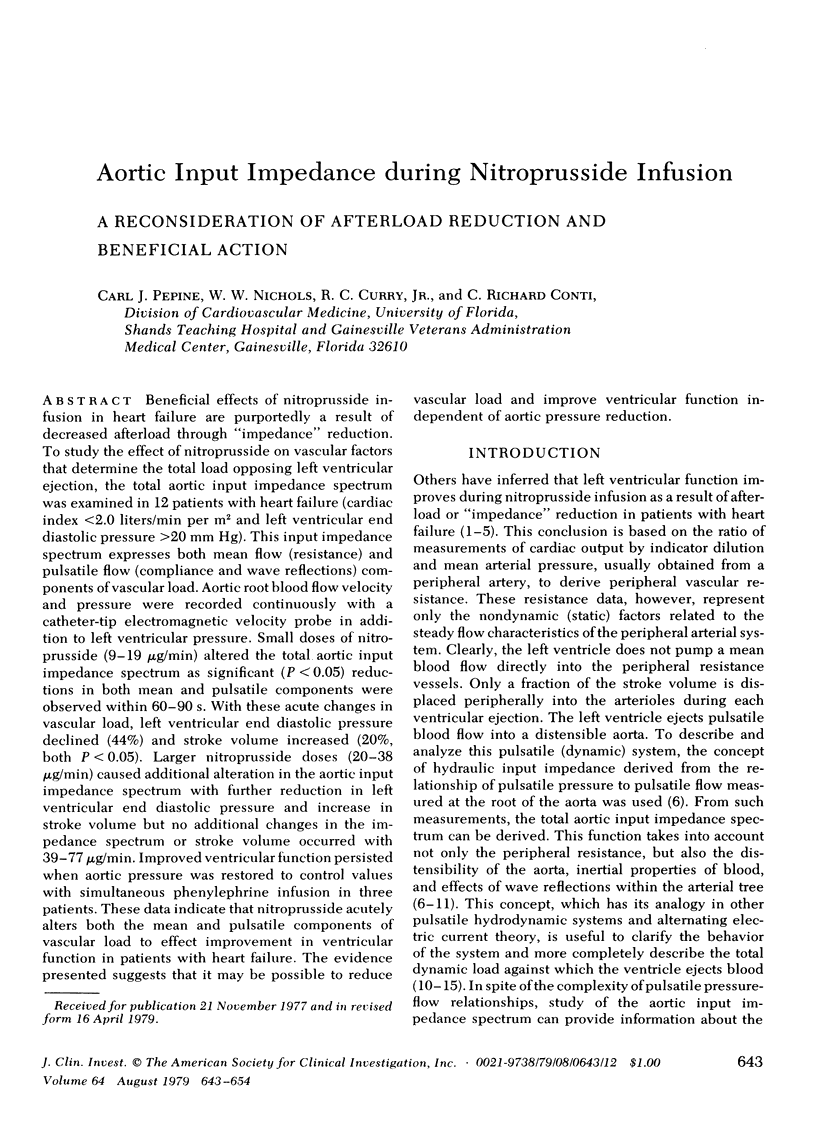
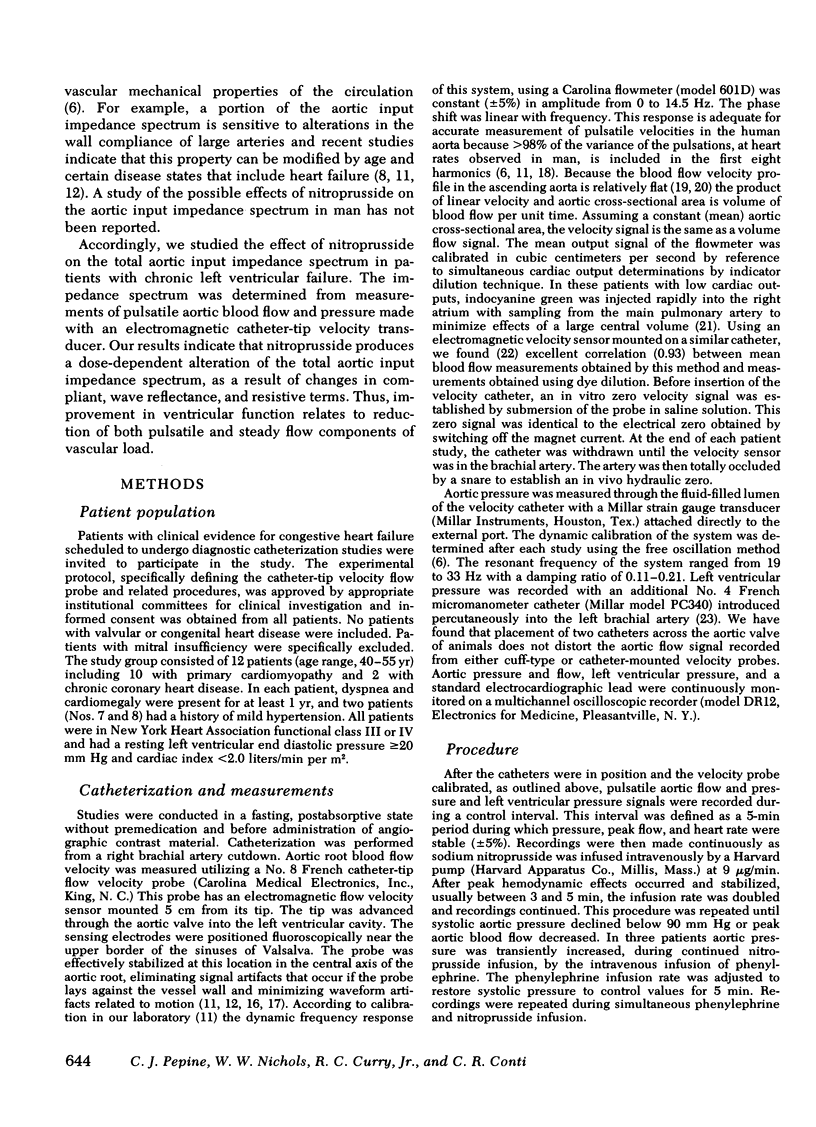
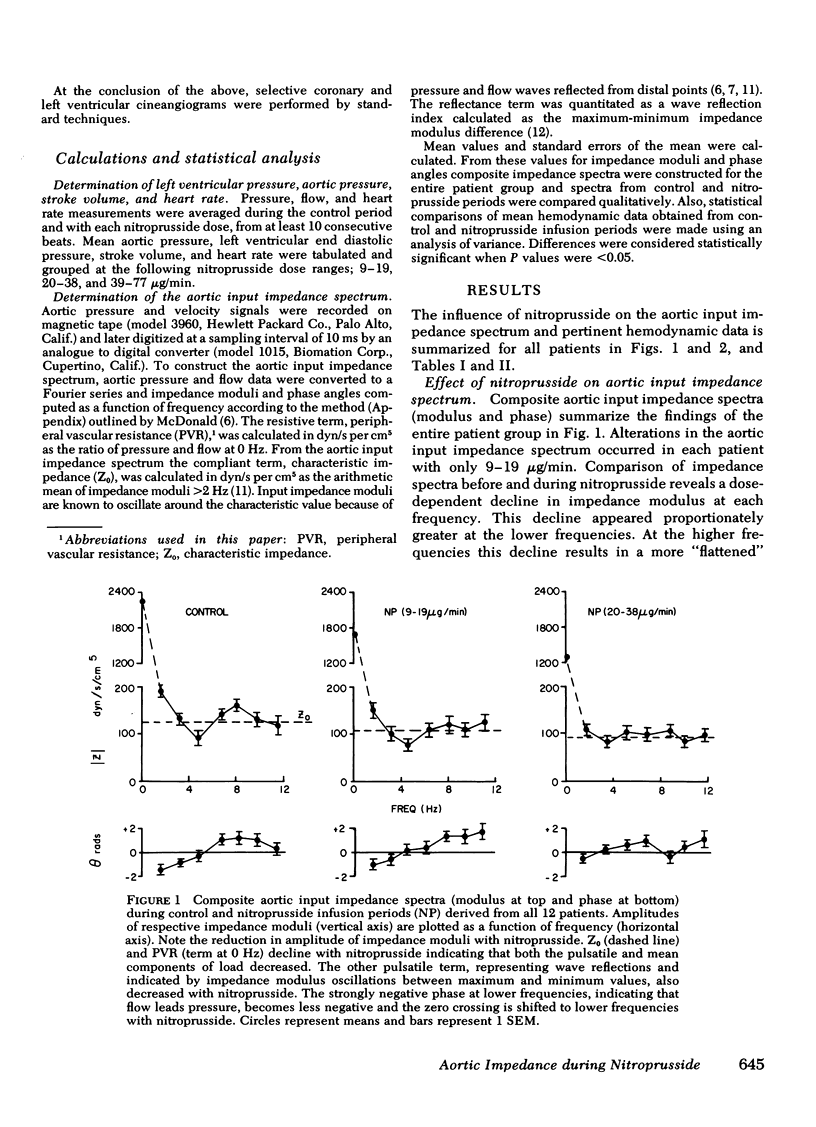


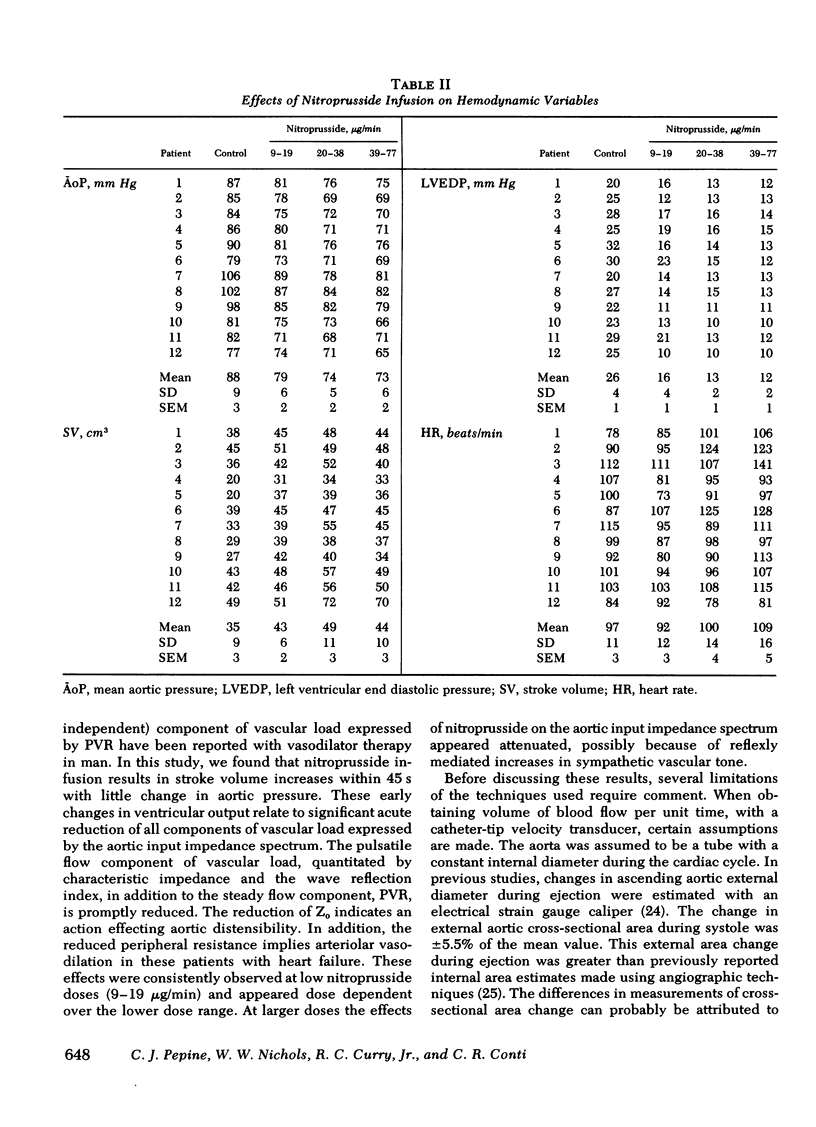
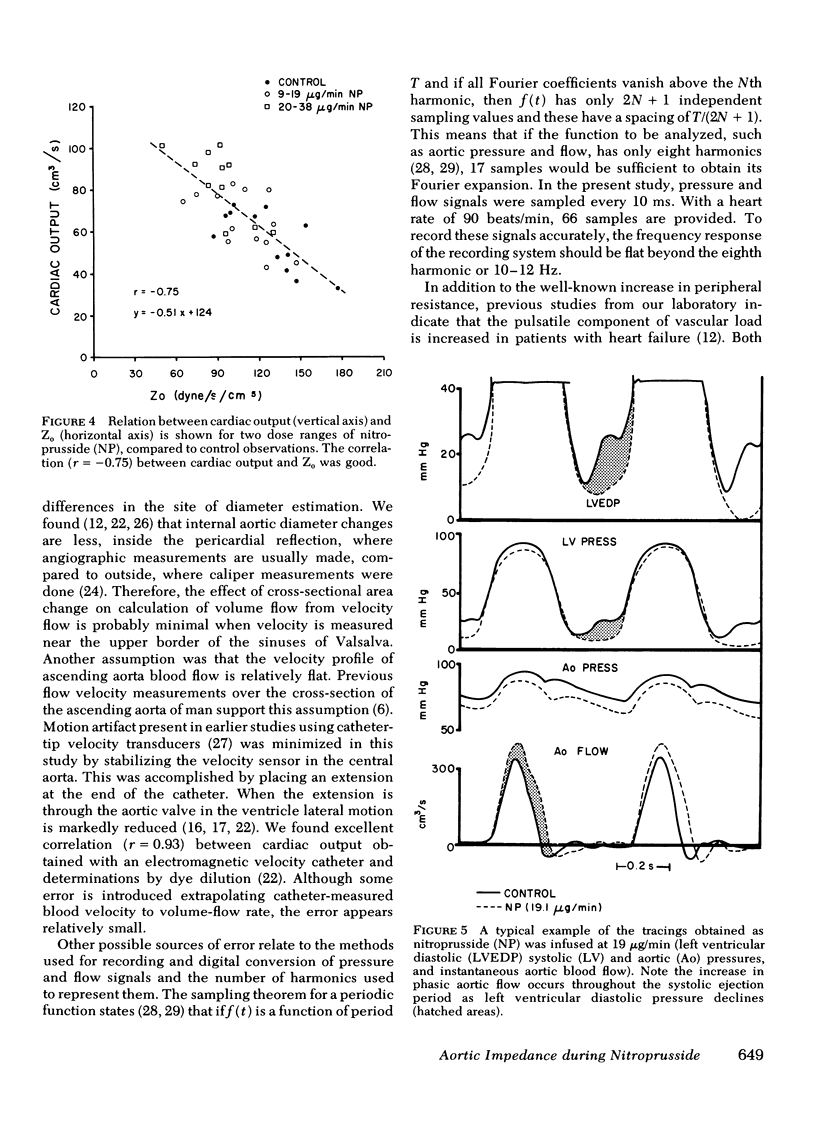
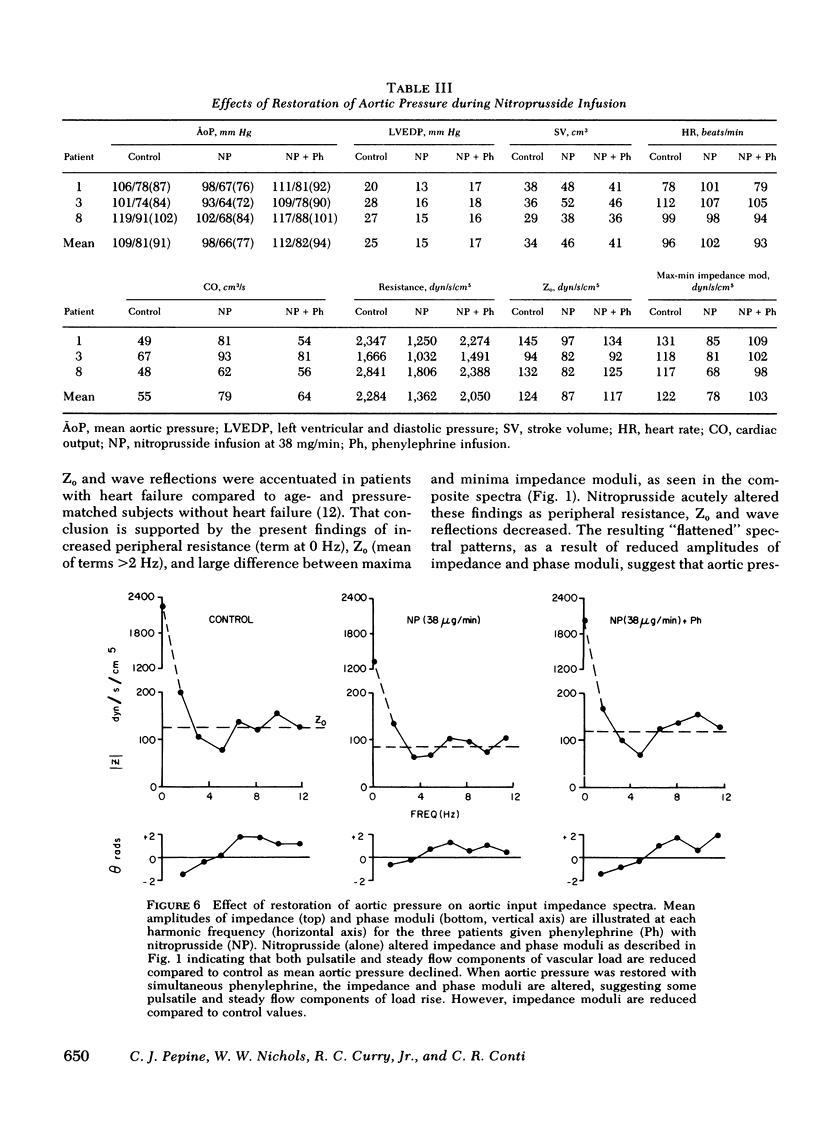
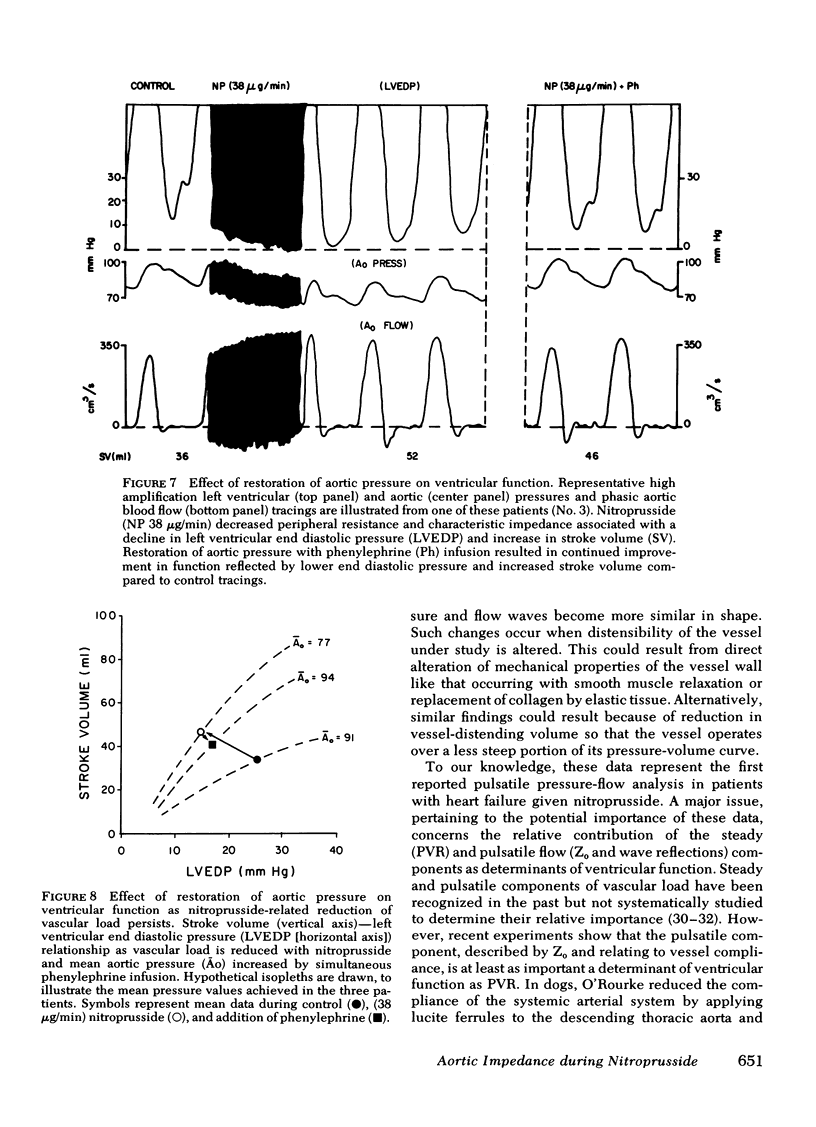
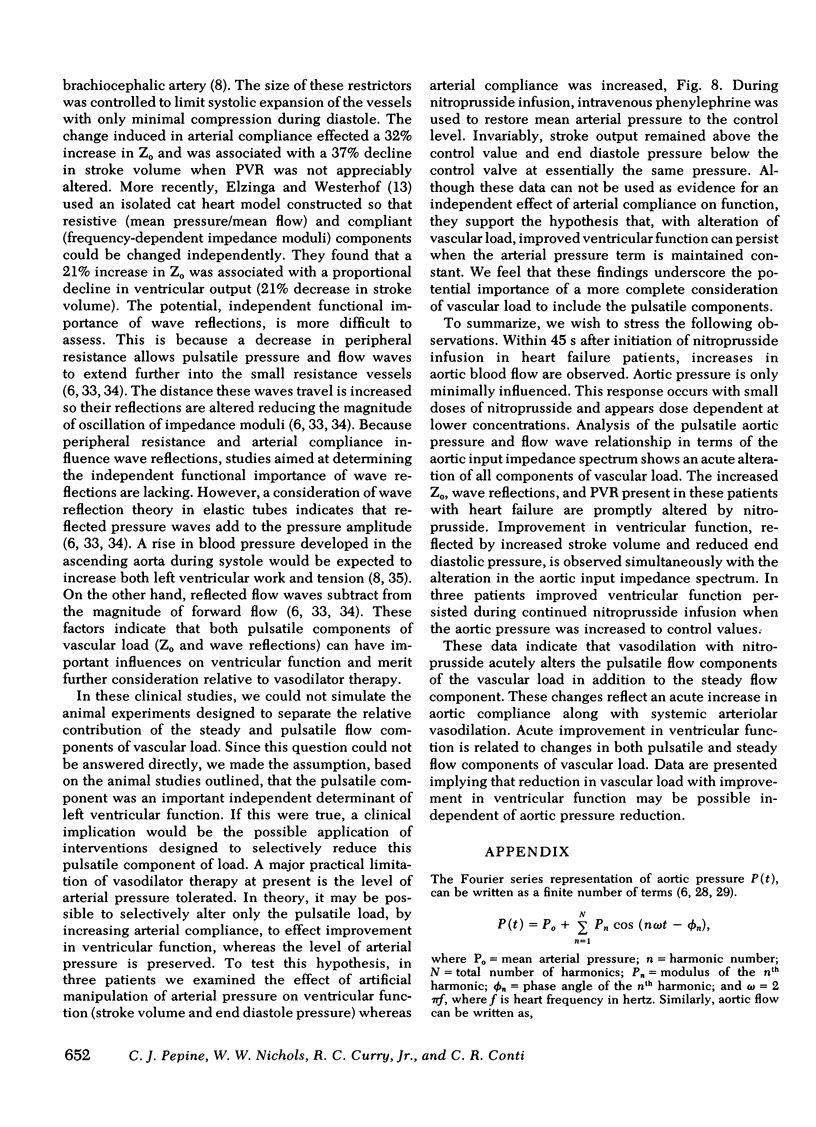

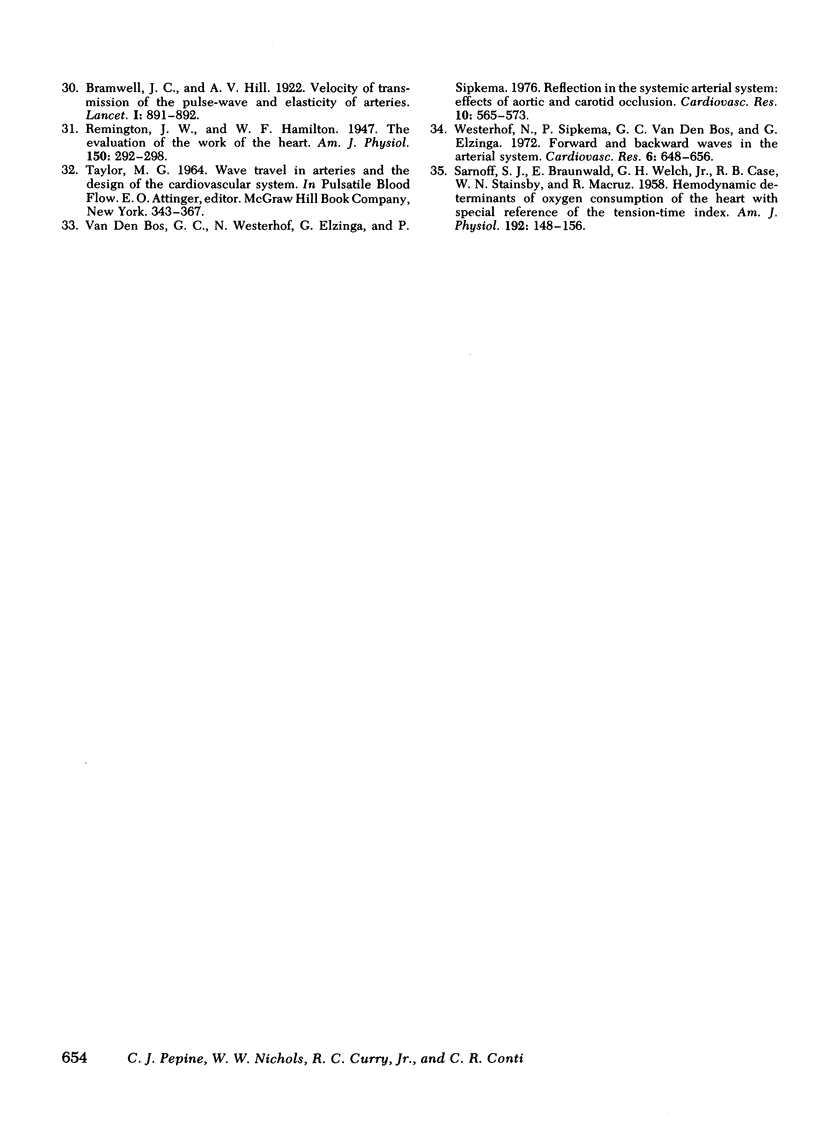
Selected References
These references are in PubMed. This may not be the complete list of references from this article.
- Attinger E. O., Anné A., McDonald D. A. Use of Fourier series for the analysis of biological systems. Biophys J. 1966 May;6(3):291–304. doi: 10.1016/S0006-3495(66)86657-2. [DOI] [PMC free article] [PubMed] [Google Scholar]
- Bassingthwaighte J. B., Sturm R. E., Wood E. H. Advances in indicator dilution techniques applicable to studies of the acutely ill patient. Mayo Clin Proc. 1970 Aug;45(8):563–572. [PMC free article] [PubMed] [Google Scholar]
- Chatterjee K., Parmley W. W. The role of vasodilator therapy in heart failure. Prog Cardiovasc Dis. 1977 Jan-Feb;19(4):301–325. doi: 10.1016/0033-0620(77)90006-8. [DOI] [PubMed] [Google Scholar]
- Cohn J. N. Vasodilator therapy for heart failure. The influence of impedance on left ventricular performance. Circulation. 1973 Jul;48(1):5–8. doi: 10.1161/01.cir.48.1.5. [DOI] [PubMed] [Google Scholar]
- Elzinga G., Westerhof N. Pressure and flow generated by the left ventricle against different impedances. Circ Res. 1973 Feb;32(2):178–186. doi: 10.1161/01.res.32.2.178. [DOI] [PubMed] [Google Scholar]
- GREENFIELD J. C., Jr, PATEL D. J. Relation between pressure and diameter in the ascending aorta of man. Circ Res. 1962 May;10:778–781. doi: 10.1161/01.res.10.5.778. [DOI] [PubMed] [Google Scholar]
- Gabe I. T., Gault J. H., Ross J., Jr, Mason D. T., Mills C. J., Schillingford J. P., Braunwald E. Measurement of instantaneous blood flow velocity and pressure in conscious man with a catheter-tip velocity probe. Circulation. 1969 Nov;40(5):603–614. doi: 10.1161/01.cir.40.5.603. [DOI] [PubMed] [Google Scholar]
- Miller R. R., Vismara L. A., Zelis R., Amsterdam E. A., Mason D. T. Clinical use of sodium nitroprusside in chronic ischemic heart disease. Effects on peripheral vascular resistance and venous tone and on ventricular volume, pump and mechanical performance. Circulation. 1975 Feb;51(2):328–336. doi: 10.1161/01.cir.51.2.328. [DOI] [PubMed] [Google Scholar]
- Mills C. J., Gabe I. T., Gault J. H., Mason D. T., Ross J., Jr, Braunwald E., Shillingford J. P. Pressure-flow relationships and vascular impedance in man. Cardiovasc Res. 1970 Oct;4(4):405–417. doi: 10.1093/cvr/4.4.405. [DOI] [PubMed] [Google Scholar]
- Milnor W. R. Arterial impedance as ventricular afterload. Circ Res. 1975 May;36(5):565–570. doi: 10.1161/01.res.36.5.565. [DOI] [PubMed] [Google Scholar]
- Nichols W. W., Conti C. R., Pepine C. J. Instantaneous force-velocity-length relations in the intact human heart. Am J Cardiol. 1977 Nov;40(5):754–761. doi: 10.1016/0002-9149(77)90193-x. [DOI] [PubMed] [Google Scholar]
- Nichols W. W., Conti C. R., Walker W. E., Milnor W. R. Input impedance of the systemic circulation in man. Circ Res. 1977 May;40(5):451–458. doi: 10.1161/01.res.40.5.451. [DOI] [PubMed] [Google Scholar]
- Nichols W. W., Pepine C. J., Millar H. D., Christie L. G., Jr, Conti C. R. Percutaneous left ventricular catheterisation with an ultraminiature catheter-tip pressure transducer. Cardiovasc Res. 1978 Sep;12(9):566–568. doi: 10.1093/cvr/12.9.566. [DOI] [PubMed] [Google Scholar]
- O'Rourke M. F. Steady and pulsatile energy losses in the systemic circulation under normal conditions and in simulated arterial disease. Cardiovasc Res. 1967 Oct;1(4):313–326. doi: 10.1093/cvr/1.4.313. [DOI] [PubMed] [Google Scholar]
- O'Rourke M. F., Taylor M. G. Input impedance of the systemic circulation. Circ Res. 1967 Apr;20(4):365–380. doi: 10.1161/01.res.20.4.365. [DOI] [PubMed] [Google Scholar]
- Pepine C. J., Nichols W. W., Conti C. R. Aortic input impedance in heart failure. Circulation. 1978 Sep;58(3 Pt 1):460–465. doi: 10.1161/01.cir.58.3.460. [DOI] [PubMed] [Google Scholar]
- Perschau R. A., Pepine C. J., Nichols W. W., Downs J. B. Instantaneous blood flow responses to positive end-expiratory pressure with spontaneous ventilation. Circulation. 1979 Jun;59(6):1312–1318. doi: 10.1161/01.cir.59.6.1312. [DOI] [PubMed] [Google Scholar]
- Peterson K. L., Uther J. B., Shabeetai R., Braunwald E. Assessment of left ventricular performance in man. Instantaneous tension-velocity-length relations obtained with the aid of an electromagnetic velocity catheter in the ascending aorta. Circulation. 1973 May;47(5):924–935. doi: 10.1161/01.cir.47.5.924. [DOI] [PubMed] [Google Scholar]
- SARNOFF S. J., BRAUNWALD E., WELCH G. H., Jr, CASE R. B., STAINSBY W. N., MACRUZ R. Hemodynamic determinants of oxygen consumption of the heart with special reference to the tension-time index. Am J Physiol. 1958 Jan;192(1):148–156. doi: 10.1152/ajplegacy.1957.192.1.148. [DOI] [PubMed] [Google Scholar]
- Uther J. B., Peterson K. L., Shabetai R., Braunwald E. Measurement of ascending aortic flow patterns in man. J Appl Physiol. 1973 Apr;34(4):513–518. doi: 10.1152/jappl.1973.34.4.513. [DOI] [PubMed] [Google Scholar]
- Van Den Bos G. C., Westerhof N., Elzinga G., Sipkema P. Reflection in the systemic arterial system: effects of aortic and carotid occlusion. Cardiovasc Res. 1976 Sep;10(5):565–573. doi: 10.1093/cvr/10.5.565. [DOI] [PubMed] [Google Scholar]
- WILCKEN D. E., CHARLIER A. A., HOFFMAN J. I., GUZ A. EFFECTS OF ALTERATIONS IN AORTIC IMPEDANCE ON THE PERFORMANCE OF THE VENTRICLES. Circ Res. 1964 Apr;14:283–293. doi: 10.1161/01.res.14.4.283. [DOI] [PubMed] [Google Scholar]
- Westerhof N., Sipkema P., van den Bos G. C., Elzinga G. Forward and backward waves in the arterial system. Cardiovasc Res. 1972 Nov;6(6):648–656. doi: 10.1093/cvr/6.6.648. [DOI] [PubMed] [Google Scholar]


